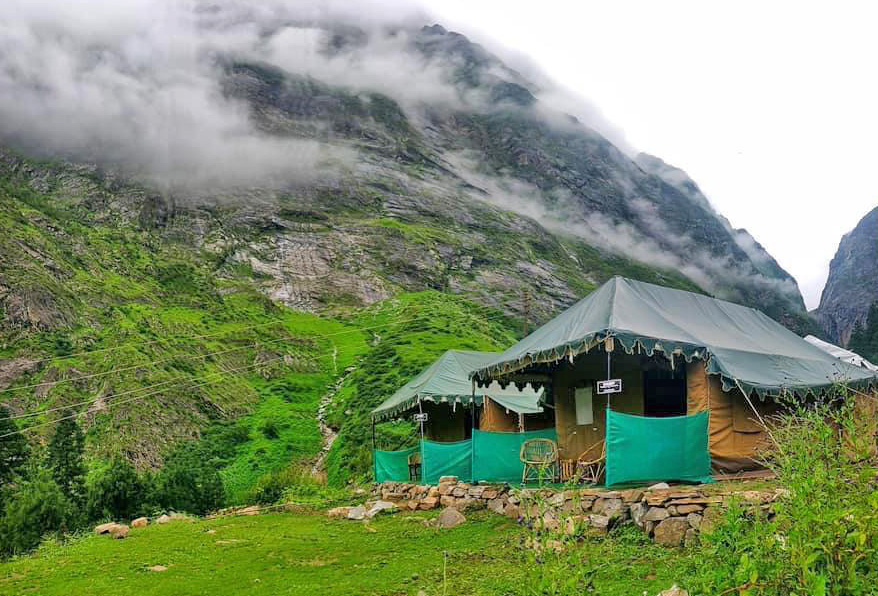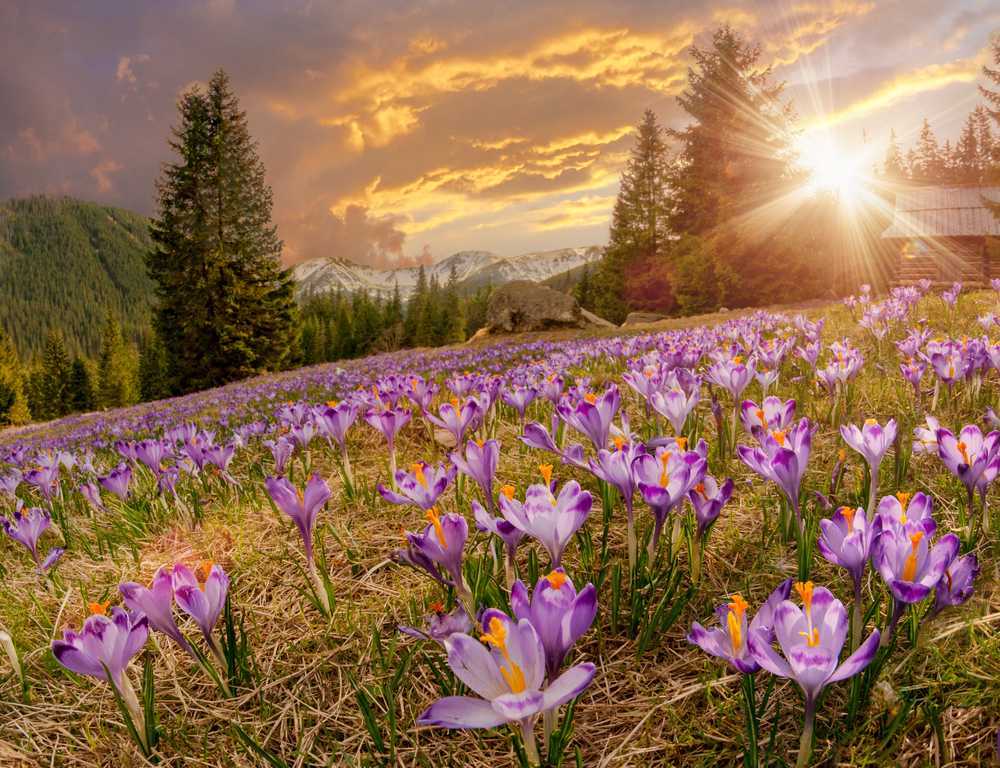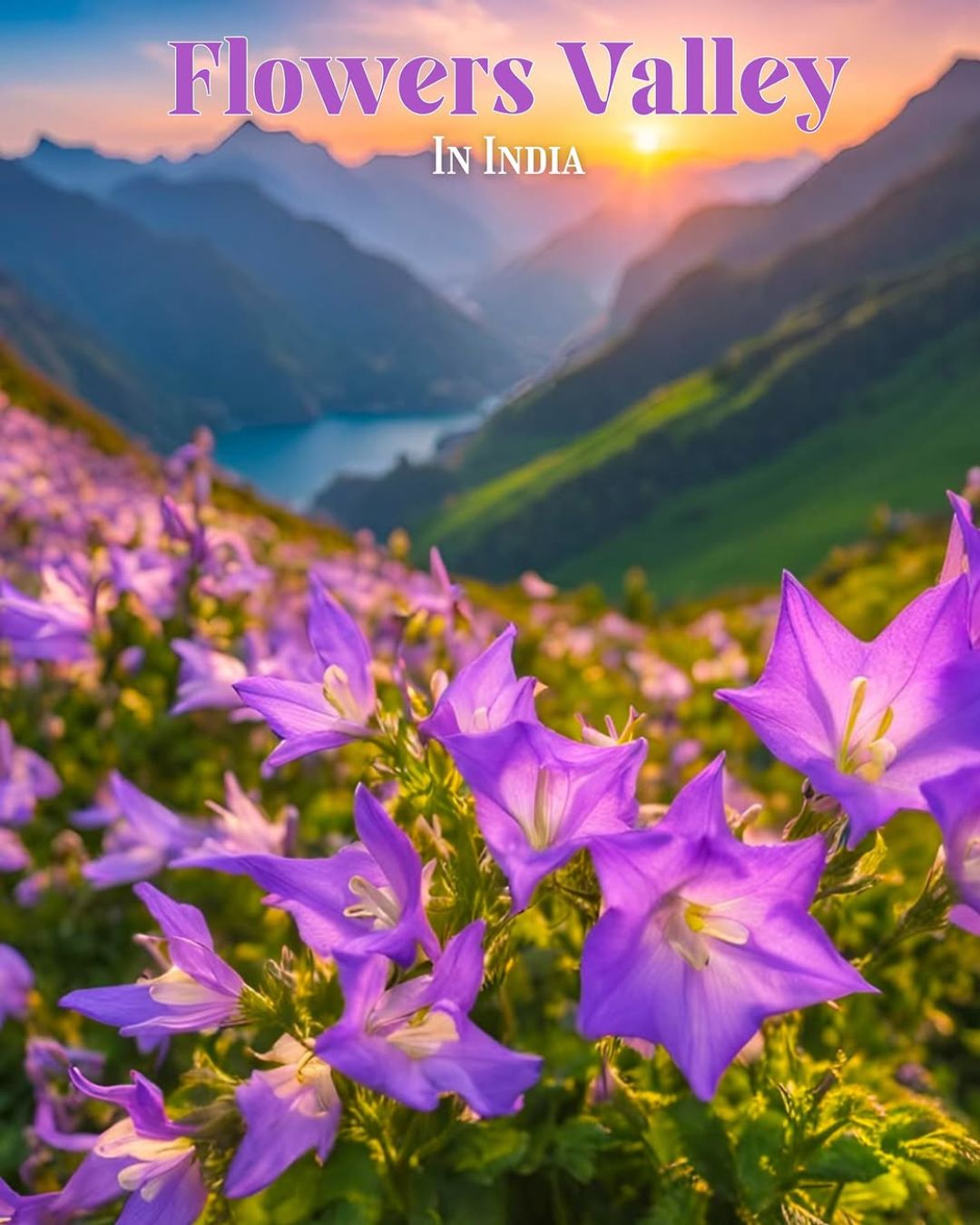A Blooming Escape: Valley of Flowers Tour Package for Peace & Adventure
Published on June 27, 2025
Valley of flowers tour package, Nestled deep in the Garhwal Himalayas, the Valley of Flowers is not just a trek—it's a spiritual retreat wrapped in floral magic. With meadows painted in pinks, purples, and blues, and snow-capped peaks towering in the distance, this UNESCO World Heritage Site offers the perfect blend of peace and adventure. Whether you're a solo traveler, a couple in search of tranquility, or an adventure seeker, our Valley Of Flowers Tour Package is crafted to deliver an unforgettable Himalayan escape.
Why Choose Our Valley of Flowers Tour Package?
At TourMyHoliday, we believe every journey should be as beautiful as the destination. Our expertly curated Valley of Flowers tour packages ensure seamless travel, stunning trekking experiences, and soulful moments with nature. Each package is designed to accommodate different needs—be it couples, group travelers, spiritual seekers, or thrill-lovers.

Journey Through the Bloom: Day-Wise Itinerary
Day 1: Rishikesh to Joshimath/Pipalkoti – The Mountain Calling Begins
Kickstart your adventure in the spiritual town of Rishikesh. Meet your group at the iconic 60’s Café (The Beatles Café) and prepare to ascend into the lap of the Himalayas.
Drive through winding mountain roads, lush valleys, and roaring rivers as you make your way to Joshimath or Pipalkoti.
Check into your cozy accommodation, breathe in the crisp mountain air, and rest up for the exciting trek ahead.
Overnight stay in Joshimath/Pipalkoti.
Day 2: Trek from Joshimath/Pipalkoti to Ghangaria – Into the Heart of the Himalayas
After an early breakfast, travel to Govindghat, the base point of the trek. From here, begin your 9 km trek to Ghangaria, a beautiful village nestled amidst pine trees and snow-kissed peaks.
Walk along the Pushpawati River, cross quaint bridges, and spot waterfalls cascading down the cliffs.
Reach Ghangaria, your gateway to the Valley of Flowers.
Overnight stay in Ghangaria.
Day 3: Ghangaria to Valley of Flowers – A Walk Through Nature’s Canvas
Wake up early for the magical moment you’ve been waiting for.
Start your trek into the UNESCO-listed Valley of Flowers National Park, where over 500 species of vibrant Himalayan flora bloom during monsoon.
Marvel at meadows bursting with orchids, poppies, primulas, and rare Himalayan blue poppy.
Let the colors, fragrances, and snow-covered peaks surrounding you create a once-in-a-lifetime experience.
Return to Ghangaria in the evening for your overnight stay.
Day 4: Ghangaria to Hemkund Sahib – A Spiritual High
Today’s trek leads you to the sacred Hemkund Sahib, one of the highest Gurudwaras in the world, perched at 4,329 meters.
The trail is steep but rewarding, offering mesmerizing alpine views and a sense of spiritual serenity at the pristine Hemkund Lake.
Take a moment to meditate, dip your toes in the glacial waters, and absorb the peaceful energy of this divine site.
Descend back to Ghangaria for a restful night.
Day 5: Ghangaria to Joshimath/Pipalkoti – The Downhill Return
After breakfast, bid farewell to Ghangaria as you trek back to Govindghat.
From there, drive to Joshimath or Pipalkoti, retracing your journey through majestic landscapes.
Celebrate your successful trek with a warm meal and cozy stay at the hotel.
Overnight stay in Joshimath/Pipalkoti.
Day 6: Return to Rishikesh – Journey Back with Blooming Memories
Wrap up your adventure with a scenic drive back to Rishikesh.
Let the memories of wildflowers, mountain winds, spiritual highs, and newfound friendships travel back with you.
You’ll arrive with a heart full of peace and a camera full of colors—your Valley of Flowers tour now etched in your soul.
What’s Included in Your Bloom-Filled Adventure
-
Transfers & Transportation
All ground transportation from Rishikesh to Joshimath/Pipalkoti and back in a comfortable vehicle (shared/private as per package). -
Accommodation
Neat and clean stays on a twin/triple sharing basis:-
Joshimath/Pipalkoti – 2 nights
-
Ghangaria – 3 nights
-
-
Meals
Delicious vegetarian meals during the trek (Day 1 dinner to Day 6 breakfast). -
Trek Permits & Entry Fees
All necessary permits and Valley of Flowers National Park entry fees. -
Experienced Trek Guide
Certified and knowledgeable trek leaders and support team for a safe and guided experience. -
Safety Gear
Basic first-aid kit, oxygen cylinder, and emergency support throughout the trek. -
Porter/Mule (Optional)
Assistance available for personal luggage on prior request (at additional cost).
What’s Not Included – Know Before You Go
-
Travel to Rishikesh
Airfare, train, or bus travel to and from Rishikesh is not included. -
Meals During Transit
Meals en route on Day 1 (Rishikesh to Joshimath) and Day 6 (Joshimath to Rishikesh) are excluded. -
Personal Expenses
Laundry, shopping, tips, snacks, bottled water, or any other personal costs. -
Travel Insurance
Travel or medical insurance is not covered in the package. Recommended for all trekkers. -
Porter Charges (If Required)
Mules or porters for personal luggage are chargeable separately. -
Additional Sightseeing
Visits beyond the mentioned itinerary (e.g., Badrinath, Mana Village) are not included unless added on request.

Stay Amidst the Serenity: Accommodations in the Valley of Flowers Trek
When you're trekking through the breathtaking landscapes of the Valley of Flowers, your accommodation becomes more than just a place to rest—it becomes a part of the experience. Whether you're pausing after a long day of hiking or waking up to mountain mist and alpine breezes, your stay should reflect the natural beauty and simplicity of the Himalayas.
Where You’ll Stay During the Journey
Joshimath / Pipalkoti: The Mountain Gateway
Before and after your trek, you’ll be staying in comfortable guesthouses or hotels in Joshimath or Pipalkoti—small hill towns with cozy accommodations and majestic views of the surrounding valleys. These stays are equipped with:
-
Clean rooms with attached bathrooms
-
Hot water facilities
-
Homely meals to warm your soul
-
Optional room heaters (chargeable)
This is where you can unwind, charge your devices, and prepare for your alpine adventure.
Ghangaria: The Base Camp in the Clouds
During the trekking days, you’ll rest in Ghangaria, the base village for the Valley of Flowers and Hemkund Sahib treks. Accommodations here are simple yet welcoming, designed to meet the needs of trekkers while keeping you close to nature.
Expect:
-
Neat rooms in guesthouses or lodges
-
Basic bedding and blankets
-
Shared or attached bathrooms (depending on the property)
-
Bonfire evenings (subject to weather and availability)
-
A warm cup of chai with stunning Himalayan backdrops
Though it’s remote, the charm of staying in Ghangaria lies in its raw beauty and trekking camaraderie. It’s the perfect place to rest under a sky full of stars.
Things to Know About Accommodations
-
Power supply can be intermittent in high-altitude areas, so carry a power bank.
-
Wi-Fi is limited—use this chance to digitally detox.
-
Pack your own essentials like towels, toiletries, and flip-flops.
-
Hot water is usually available in buckets and may be chargeable.

Bloom Beneath the Skies: Weather in the Valley of Flowers
The Valley of Flowers isn’t just a spectacle on land—it’s a drama in the sky. The changing weather here adds mystery, beauty, and character to your Himalayan journey. Whether you're walking under soft drizzles or catching sunbeams on wildflower petals, the valley’s weather enhances every moment of the experience.
Seasonal Snapshot: When the Valley Wears Its Best Colors
The Valley of Flowers opens from June to early October, but each month brings its own charm:
June – Early July: The Fresh Awakening
-
Temperature: 8°C to 18°C
-
Experience: Snow starts melting, streams gush to life, and green carpets begin to roll out. The first wildflowers bloom and the trails are freshly uncovered.
Mid-July to August: Peak Bloom, Peak Beauty
-
Temperature: 7°C to 15°C
-
Experience: Monsoon showers nourish the valley, and it explodes with a vibrant riot of over 500 species of alpine flowers. Expect light rain, misty mornings, and dramatic skies—perfect for photographers and nature lovers.
September to Early October: The Golden Goodbye
-
Temperature: 5°C to 12°C
-
Experience: Flowers begin to wither, but the valley turns into a golden-hued paradise. Clear skies, crisp air, and quieter trails make it ideal for peaceful treks and stunning views.
What to Pack Based on the Weather
-
Rain Gear: Lightweight poncho or rain jacket is a must during monsoon months
-
Warm Layers: Even in July, mornings and nights are chilly
-
Waterproof Shoes: For slippery trails and stream crossings
-
UV Sunglasses & Sunscreen: High-altitude sun can be sharp after rains
Weather Tips for Trekkers
-
Weather can change quickly—always be prepared for sudden drizzle or fog.
-
Start treks early in the morning to avoid afternoon clouds or showers.
-
Mobile networks may be patchy during cloudy days—enjoy the digital detox!

Legends in Bloom: The Fascinating History of the Valley of Flowers
High up in the Garhwal Himalayas of Uttarakhand lies a place where myth meets botany, and spirituality blends seamlessly with scientific wonder. The Valley of Flowers is not just a destination—it's a discovery, a legend, and a living heritage wrapped in petals and snow.
From Mythology to Modern-Day Magic
Long before trekkers and botanists set foot in the valley, it held a sacred place in Hindu mythology. It is believed that Lord Hanuman traversed this valley while bringing the Sanjeevani herb to revive Lakshmana during the battle in the Ramayana. Locals for generations have considered the valley to be a celestial land guarded by gods, blooming only for the pure of heart.
The Accidental Discovery That Made History
Despite its mythological fame, the Valley of Flowers remained hidden from the modern world until 1931. That year, Frank Smythe, a British mountaineer and botanist, along with fellow explorers R.L. Holdsworth and Eric Shipton, stumbled upon the valley while returning from a Mount Kamet expedition. What greeted them was a surreal landscape awash with a sea of vibrant alpine flowers.
Smythe was so captivated that he later wrote a book titled "The Valley of Flowers", bringing this mystical wonderland to the attention of the world.
From Sacred Ground to UNESCO World Heritage Site
After Smythe’s discovery, the valley attracted botanists, ecologists, and nature lovers from all over the world. In 1939, renowned botanist Joan Margaret Legge from the Royal Botanic Gardens, Kew, lost her life while researching plants in the valley. A memorial stands in her honor, reminding visitors of the valley’s allure and power.
Recognizing its exceptional natural beauty and rare biodiversity, UNESCO declared the Valley of Flowers a World Heritage Site in 2005. Today, it forms part of the Nanda Devi Biosphere Reserve, protected for its endangered species, alpine flora, and unique ecosystem.
A Living Museum of Himalayan Flora
With over 500 species of wildflowers, including the rare Himalayan blue poppy, cobra lily, and brahma kamal, the valley becomes a floral paradise from mid-July to September. It is also home to elusive wildlife like the snow leopard, musk deer, Asiatic black bear, and colorful birds fluttering through the high-altitude breeze.
The Valley of Flowers is more than a trek—it’s a timeless tribute to the beauty of untouched nature.

Walk Through History, Wrapped in Petals
valley of flowers tour pakage, As you walk through the misty trails and flower-filled meadows, you're not just exploring nature—you’re retracing the steps of explorers, botanists, sages, and gods. The Valley of Flowers invites you to step into a story that is still blooming.
Frequently Asked Questions:
1. What is the Valley of Flowers famous for?
The Valley of Flowers is known for its vibrant meadows filled with over 500 species of wild Himalayan flowers, stunning alpine scenery, and rich biodiversity.
2. When is the best time to visit the Valley of Flowers?
Mid-July to August is the peak bloom season, but the valley is open from June to early October.
3. Is the Valley of Flowers trek difficult?
It’s a moderate trek, suitable for beginners with decent fitness. No mountaineering experience is required.
4. What’s the weather like during the trek?
Expect cool days (5°C–18°C), occasional rain, and chilly nights. Layers and rain gear are a must.
5. Is this tour suitable for couples?
Absolutely! Our Valley of Flowers tour package for couples offers private stays and serene moments perfect for romantic getaways.
6. How long is the trek to Valley of Flowers?
From Ghangaria, it’s a 6 km trek (one way) to reach the Valley of Flowers and back the same day.
7. Where does the tour usually start from?
We offer packages starting from Delhi, Rishikesh, Haridwar, and Mumbai, depending on your location and convenience.
8. What kind of accommodations are provided?
Clean and comfortable guesthouses or hotels in Joshimath/Pipalkoti and basic lodges in Ghangaria during the trek.
9. Are permits required to enter the Valley of Flowers?
Yes, entry permits are mandatory and included in our Valley of Flowers trek packages.
10. Do you offer guided tours and fixed departures?
Yes. We provide Valley of Flowers guided tours with experts and regular fixed departures during peak season.


.jpg)
